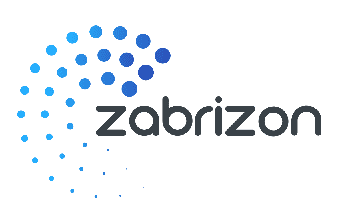Artificial Intelligence is no longer a buzzword it’s the backbone of digital transformation across industries. In 2025, AI is enabling businesses to scale operations, personalize experiences, automate mundane tasks, and unlock data-driven growth. According to PwC, AI could contribute up to $15.7 trillion to the global economy by 2030. Companies that adapt now are gaining a serious competitive advantage.
In this article, we dive into 10 of the most impactful AI solutions transforming businesses today. You’ll learn what each solution is, how it's used in the real world, and how it benefits enterprises like yours.
Why AI is a Business Imperative in 2025
The rapid digitization of the global economy has forced businesses to rethink traditional models. AI is no longer optional; it’s essential. Here’s why:
- Customer Expectations: People now expect 24/7 support, personalized experiences, and instant service.
- Data Explosion: Businesses are drowning in data. AI turns this data into insights.
- Labor Costs: AI-driven automation reduces dependency on human labor for repetitive tasks.
- Competitive Edge: AI differentiates agile, modern companies from legacy firms stuck in manual workflows.
Companies leveraging AI are outperforming their peers in customer retention, operational efficiency, and innovation. Let’s explore how.
Top 10 AI Solutions Transforming Businesses
1. AI-Powered Customer Service (Chatbots, Voice Assistants)
What it is: Intelligent agents that handle FAQs, bookings, support, and more.
Where it fits: E-commerce, banking, travel, and SaaS.
Real-world example: H&M uses chatbots to guide customers through outfits based on their preferences.
Benefit: Reduces customer service costs by up to 30% and increases satisfaction.
2. Predictive Analytics for Demand Forecasting
What it is: AI models analyze historical data to forecast demand trends.
Where it fits: Retail, logistics, manufacturing.
Real-world example: Amazon uses AI to predict inventory requirements and reduce overstock.
Benefit: Improves supply chain efficiency and reduces warehousing costs.
3. Intelligent Document Processing (IDP)
What it is: AI extracts and processes data from invoices, receipts, and contracts.
Where it fits: Finance, legal, insurance.
Real-world example: UiPath helps banks automate document verification for loan processing.
Benefit: Cuts document processing time by 80% and reduces human errors.
4. AI-Powered Cybersecurity Threat Detection
What it is: AI monitors network activity and flags anomalies in real-time.
Where it fits: All digital businesses, especially finance and healthcare.
Real-world example: Darktrace detects unusual patterns to prevent cyberattacks.
Benefit: Detects threats faster than traditional rule-based systems.
5. AI in Marketing Personalization
What it is: AI tailors emails, ads, and landing pages based on user behavior.
Where it fits: E-commerce, SaaS, media.
Real-world example: Netflix uses AI to personalize thumbnails and recommendations.
Benefit: Increases engagement and conversion rates.
6. AI-Driven HR Recruitment & Resume Screening
What it is: NLP-based systems screen resumes, rank candidates, and predict fit.
Where it fits: Mid-to-large enterprises hiring at scale.
Real-world example: HireVue uses AI to assess candidates via video interviews.
Benefit: Cuts time-to-hire by 50% and reduces bias.
7. Automated Financial Forecasting & Risk Modeling
What it is: AI builds financial models from transactional and external data.
Where it fits: Banking, insurance, fintech, enterprise.
Real-world example: Kabbage (by American Express) uses AI to underwrite loans.
Benefit: Faster decisions and fewer defaults.
8. Computer Vision in Retail and Manufacturing
What it is: AI-powered cameras and sensors detect defects, monitor shelves, and track people.
Where it fits: Smart factories, warehouses, and stores.
Real-world example: Walmart uses computer vision to monitor inventory in real time.
Benefit: Reduces shrinkage and improves quality control.
9. AI-Powered DevOps Automation
What it is: AI detects anomalies, auto-scales infrastructure, and predicts failures.
Where it fits: SaaS, cloud-native applications.
Real-world example: Netflix leverages AI to detect service issues before they impact users.
Benefit: Ensures 99.99% uptime and improves user satisfaction.
10. AI-Based Robotic Process Automation (RPA)
What it is: Software bots execute repetitive workflows like data entry and reconciliation.
Where it fits: Finance, HR, procurement.
Real-world example: AT&T uses AI RPA to automate service provisioning.
Benefit: Saves thousands of hours in back-office operations.
Zabrizon's Approach to Custom AI Solutions
At Zabrizon, we don’t believe in off-the-shelf AI. Every business is unique, and so are their challenges. That’s why our AI solutions are custom-built around your data, goals, and industry.
Our Process:
AI Readiness Assessment
Custom Model Design (using tools like OpenAI, TensorFlow, and Azure AI)
Implementation & Integration
Monitoring, Optimization & Scaling
We’ve helped fintech companies improve fraud detection accuracy by 45%, and e-commerce clients increase conversion by 20% with personalized AI tools. Whether you need an intelligent chatbot or an enterprise-grade ML pipeline, we can deliver it end-to-end.
How to Integrate AI into Your Business Workflow
AI can seem intimidating, but the right approach makes it accessible. Here’s a simplified roadmap:
Step 1: Identify Repetitive or Data-Heavy Tasks
Look for bottlenecks in customer service, finance, or operations.
Step 2: Gather Historical Data
Quality data is the foundation of any good AI system.
Step 3: Build a Proof of Concept (PoC)
Start small—automate a single workflow and expand from there.
Step 4: Integrate and Train
Ensure your team understands and trusts the AI system.
Step 5: Optimize Continuously
AI improves over time. Monitor outputs and retrain models as needed.
Common challenges include:
- Data privacy concerns
- Integration with legacy systems
- Organizational resistance
Zabrizon handles these through robust data governance, modular architecture, and training workshops.
Conclusion & Call to Action
AI isn’t the future. It’s the now. Companies that embrace AI in 2025 will lead their industries—those that don’t will fall behind. From customer experience to backend automation, AI is the fastest route to growth, efficiency, and innovation.
At Zabrizon, we specialize in crafting intelligent solutions tailored to your needs. Whether you’re a startup or a Fortune 500, we can help you unlock the full potential of AI.
Ready to future-proof your business?
👉 Book a Free AI Strategy Session with Zabrizon Today
